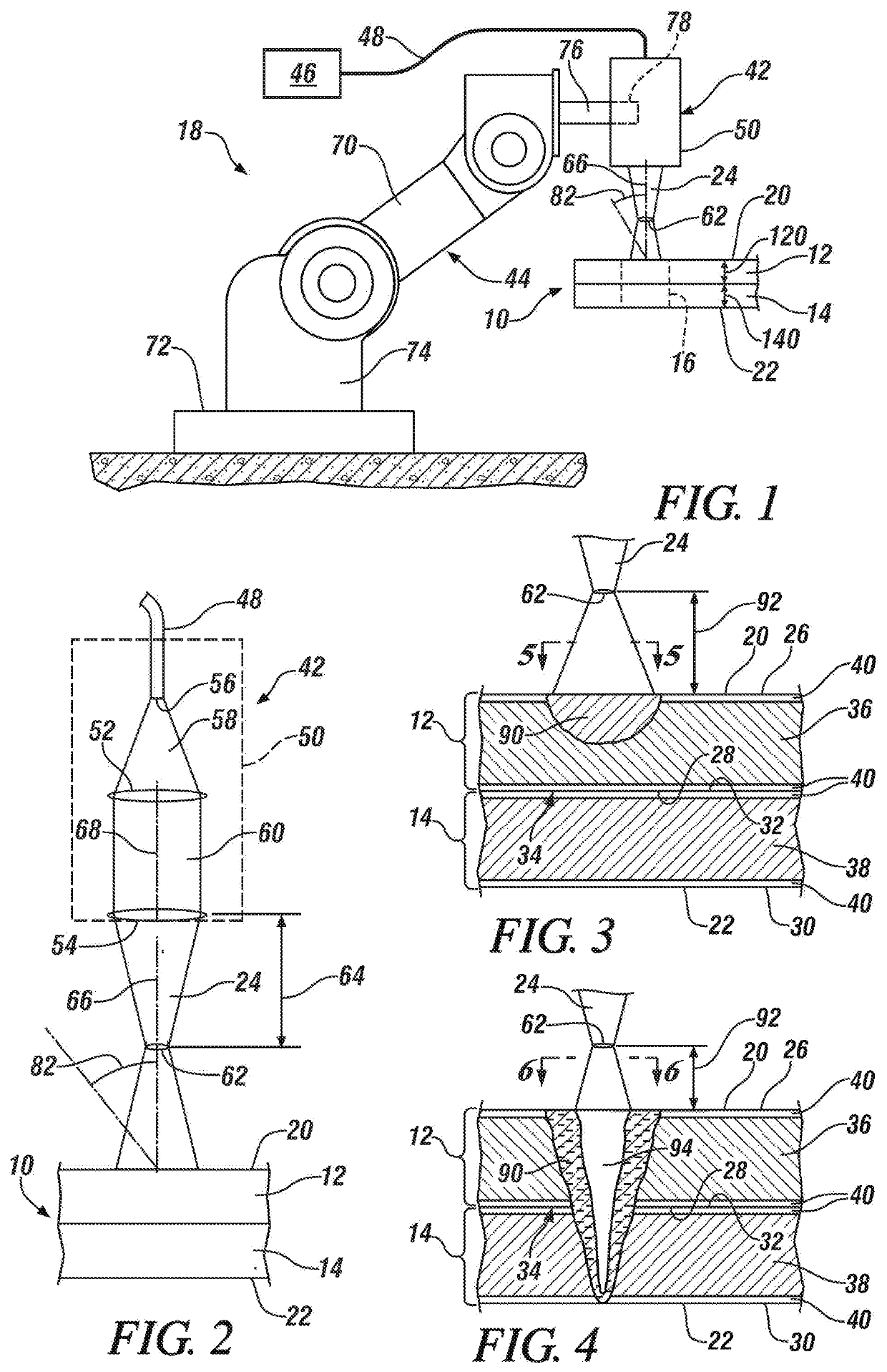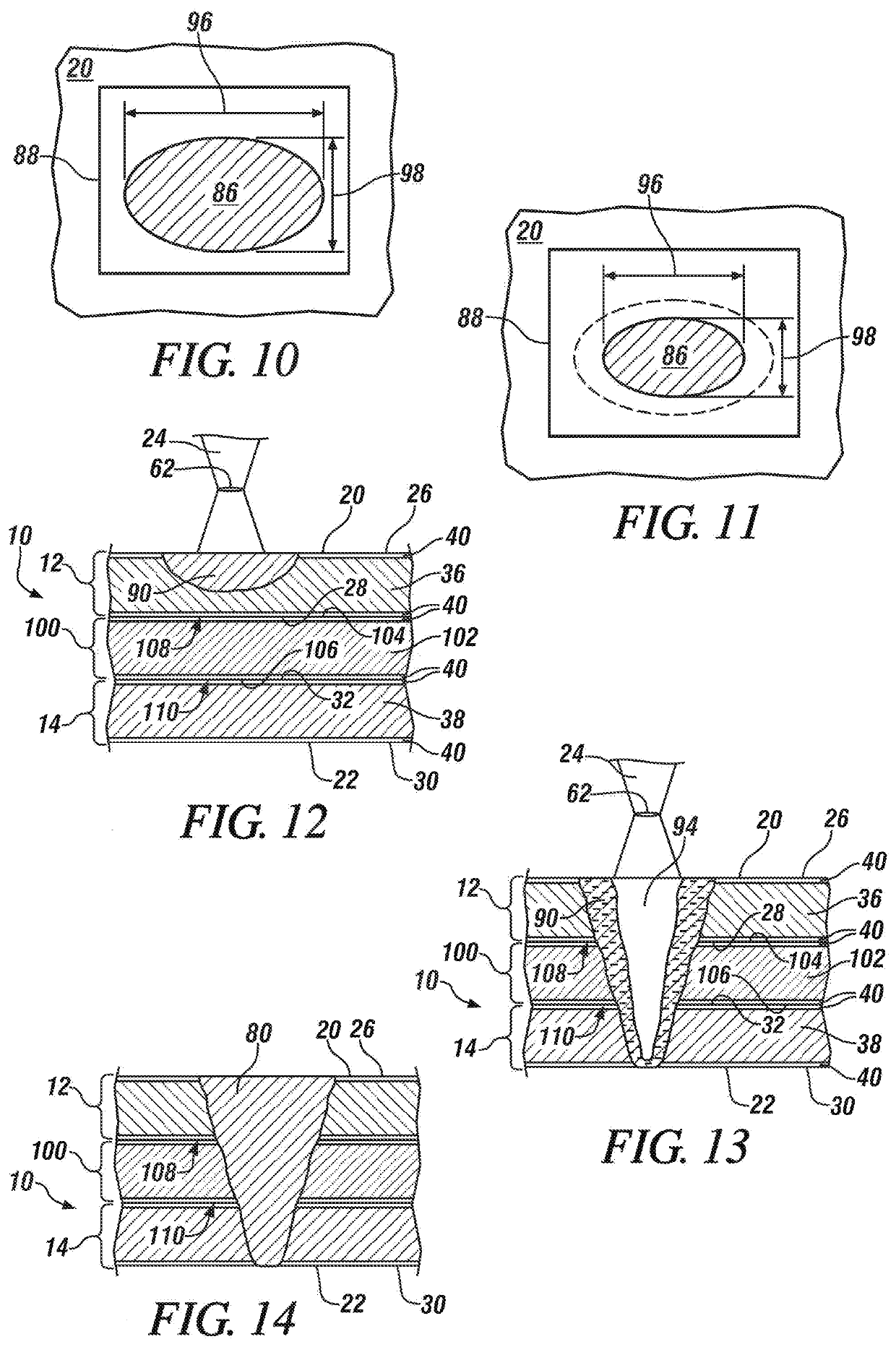Method of laser spot welding coated steels
a technology of laser spot welding and coated steel, which is applied in the direction of welding/soldering/cutting articles, manufacturing tools, transportation and packaging, etc., can solve the problems of source of weld defects, and achieve the effects of reducing the eccentricity of the projected sectional area, good strength and mechanical properties, and increasing the irradiance of the laser beam
- Summary
- Abstract
- Description
- Claims
- Application Information
AI Technical Summary
Benefits of technology
Problems solved by technology
Method used
Image
Examples
Embodiment Construction
[0027]The disclosed method of laser spot welding a workpiece stack-up comprised of two or more overlapping steel workpieces calls for increasing an irradiance of a laser beam that is trained at a top surface of the stack-up at a weld site during growth of a created molten steel weld pool. Any type of conventional laser welding apparatus may be employed to direct the laser beam towards the top surface of the workpiece stack-up and to increase the irradiance of the laser beam. Moreover, the irradiance range of the laser beam may be controlled to perform the method in either conduction welding mode or keyhole welding mode. The laser beam may thus be a solid-state laser beam or a gas laser beam depending on the characteristics of the steel workpieces being joined and the laser welding mode desired to be practiced. Some notable solid-state lasers that may be used are a fiber laser, a disk laser, a diode laser, and a Nd:YAG laser, and a notable gas laser that may be used is a CO2 laser, a...
PUM
| Property | Measurement | Unit |
|---|---|---|
| distance | aaaaa | aaaaa |
| angle of incidence | aaaaa | aaaaa |
| angle of incidence | aaaaa | aaaaa |
Abstract
Description
Claims
Application Information
 Login to View More
Login to View More - R&D
- Intellectual Property
- Life Sciences
- Materials
- Tech Scout
- Unparalleled Data Quality
- Higher Quality Content
- 60% Fewer Hallucinations
Browse by: Latest US Patents, China's latest patents, Technical Efficacy Thesaurus, Application Domain, Technology Topic, Popular Technical Reports.
© 2025 PatSnap. All rights reserved.Legal|Privacy policy|Modern Slavery Act Transparency Statement|Sitemap|About US| Contact US: help@patsnap.com



